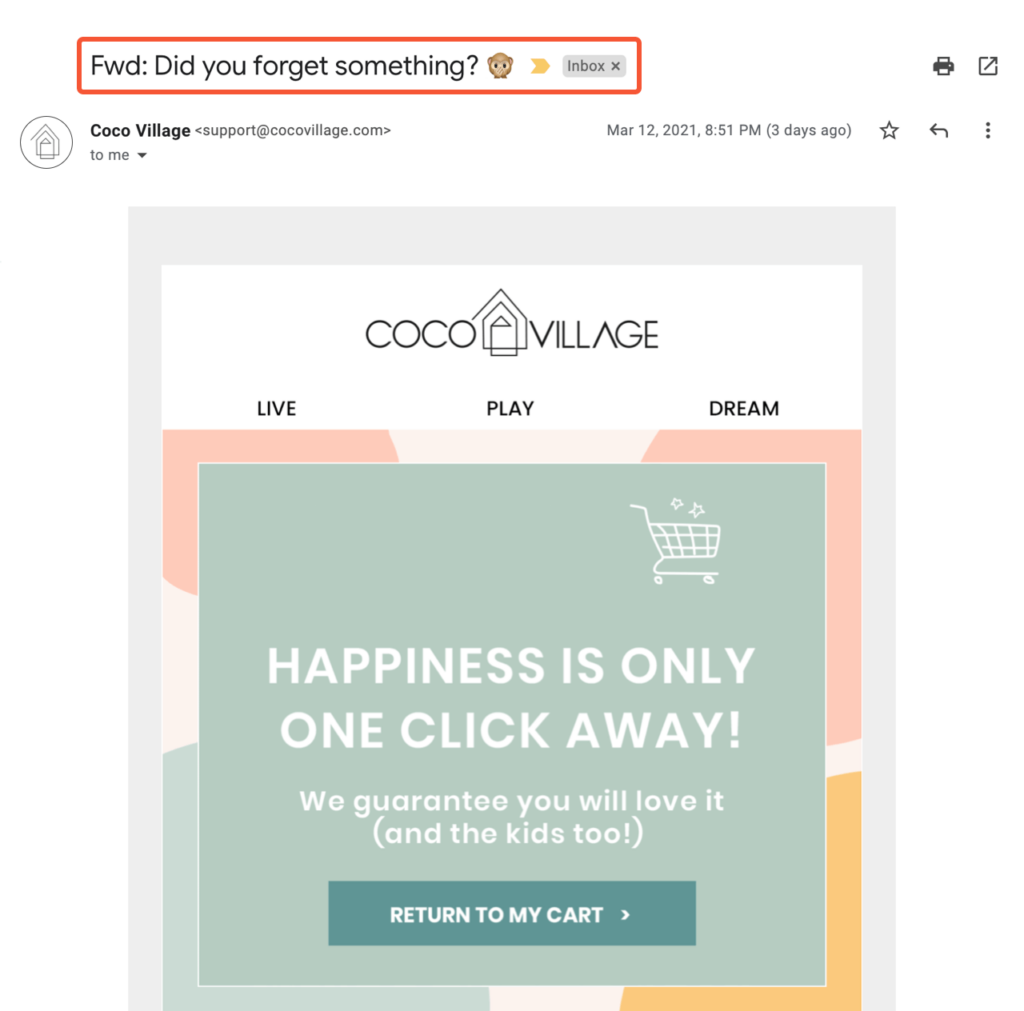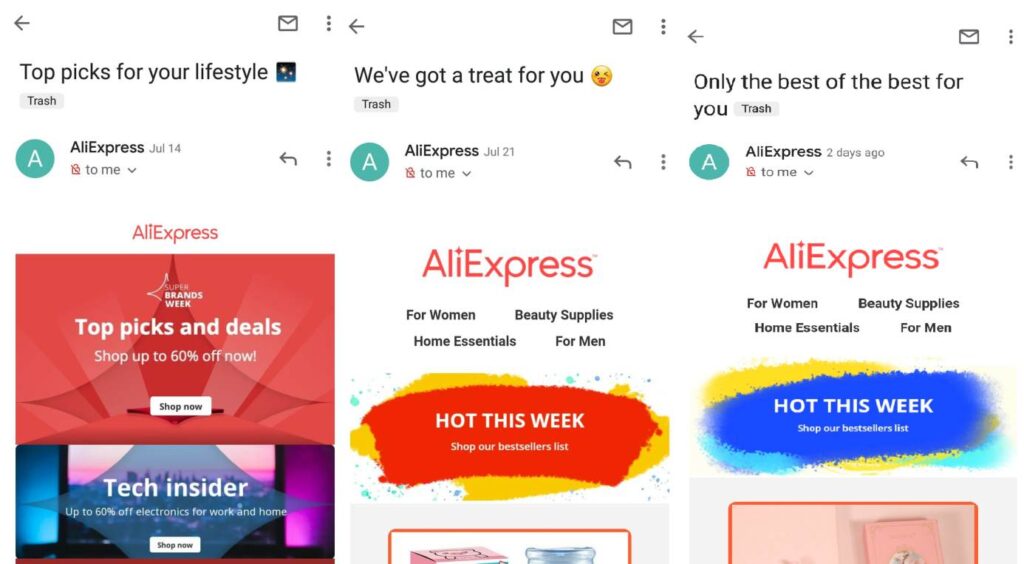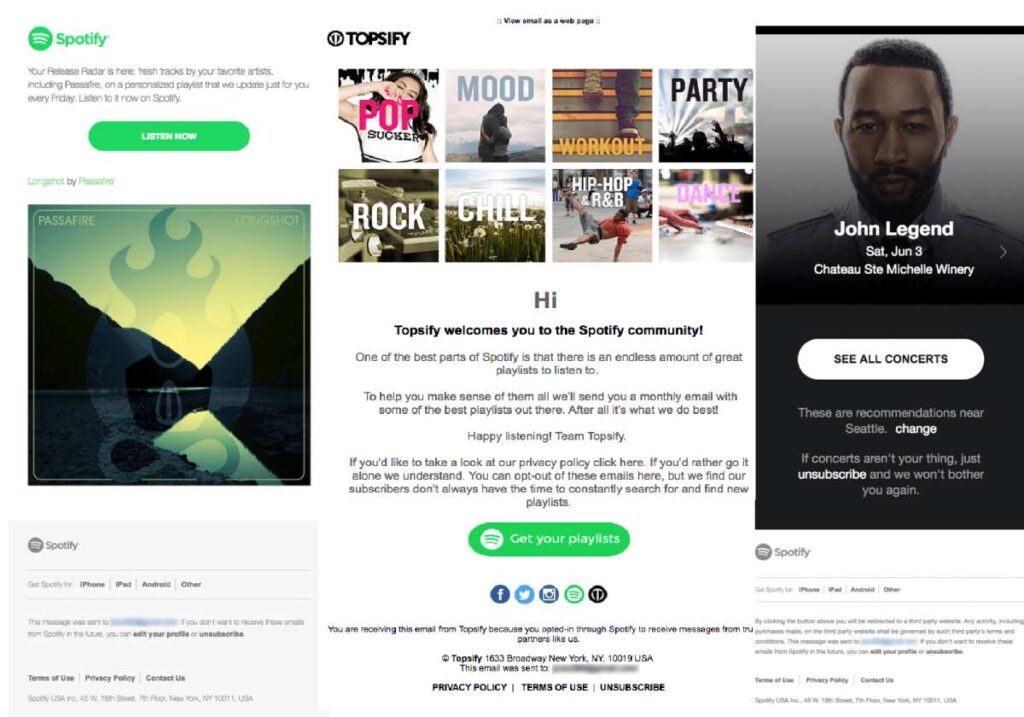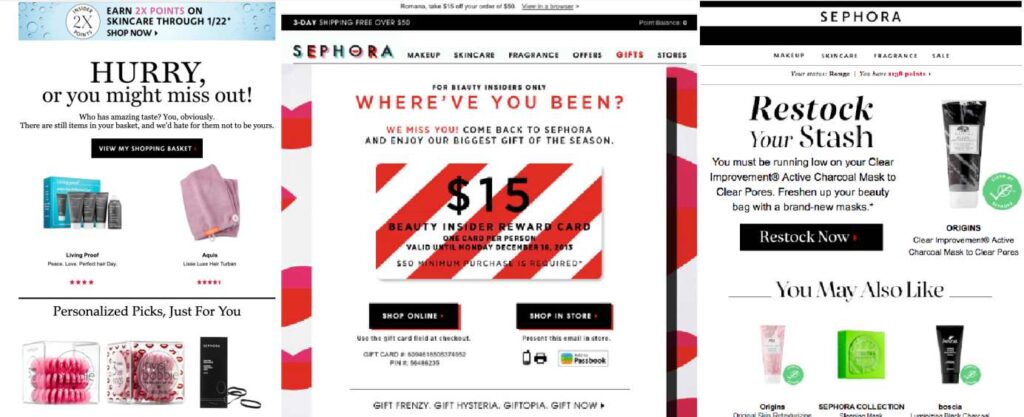Everyone likes personal appeals. This rule is relevant for brand communication with the audience. And it especially works for mailings, for sure, if you want recipients to open them. In this article, Nada Bundalo, a part of IntercoolStudio digital marketing agency, shares her best tips on how to send a personalized email campaign.
- General Tips
- Collect Relevant Data
- Ask The Right Questions
- Create Customer Personas
- Segment Your Email List
- Personalize The Subject Line
- Include Behavior Triggers
- Use an Employee Signature to Personalize Your Emails
- Pick the Best Time to Send the Email
- Make the Best Out of Abandoned Carts
- Give Them Tips and Tricks to Better Use the Products They’ve Purchased
- Remember Special Days
- Bonus Tip: Implement Mass Email Service
- Good Practice Examples
- Conclusion
The foundation for creating a successful email campaign is customization. People expect businesses to use their knowledge to design and promote valuable content, deals, and ads. Failure to fulfill this set of criteria may lead to consumers abandoning your site who would otherwise have appreciated your goods or services. In this article, we’ll go through the importance of email personalization, supported by best practices and examples of successful personalized email campaigns.
General Tips
Collect Relevant Data
Learning more about your consumers is the very first step in tailoring your digital marketing plan. To provide relevant information, you must first understand who your consumers are and how to best serve them. The most effective method for obtaining this information is quite simple — ask them.
Be careful not to ask for too much information because your readers could become swamped. Pick a few relevant questions to help you effectively get to know and assist your consumers. Additionally, be opportunistic when you can collect information to use for your email marketing efforts. The team at gaming platform Soltiaired.com, for example, would gather data in their customer support interactions, and used this to improve retention.
Ask The Right Questions
Concerning the previous step, what you ask is very important. The most popular tool for gathering information is a sign-up form. Straightforward questions can provide light on your new prospects’ likes and needs. Besides basic information like date of birth, gender, location, etc., include a few specific questions. For example, if you own a digital advertising agency, you can ask customers to select the services they are interested in, as well as their approved investment.
Then, you can start tailoring emails for your clientele with details about the service and pricing range that best suits their needs.
Create Customer Personas
Personas — generic portraits of target website visitors — are an excellent method for summarizing survey data in a consumer-oriented way. Each persona, typically 2-3, is built on the most common traits of the respondents. When all of the features are combined, they should generate profiles of authentic human beings.
A plethora of data is used to create customer personas. Rather than asking a single question, you can group clients based on a combination of traits and activities they perform. Thanks to gathered information, each persona receives a more tailored set of emails. Applying customer persona-based marketing will provide clients with a more targeted experience, increasing your email open rates.
Segment Your Email List
Segmentation — the process of “segmenting” your email list depending on customer data — is one of the most vital and powerful trends in email marketing.
In numbers, segmented email campaigns had a 14.31% higher open rate, 100.95% higher click rate, and 9.37% lower unsubscribe rate than non-segmented campaigns.
From region and profession to content style and theme, there are numerous creative methods to split your email database in order to conduct better and original campaigns that prospects and customers will like. The more knowledge you have of your email consumers, the better you’ll be at tailoring your emails to fit perfectly.

Personalize The Subject Line
Subject lines have always been significant, but they are also the customization approach that requires the most accuracy to be effective. They should vary from field to field, demographic to demographic, and so forth.
If you know your clients well and have additional information about them, you can create customized messages based on their interests and habits. Use a trigger word or a user’s name in the subject line of your email to effectively address them.
You’ll have to perform testing to determine which ones work well for your business. Most email services offer the option of split-testing subject copy to discover which types your audience best responds to. You can use these A/B tests to change the format of your subject lines depending on all of the information you’ve already gathered about a subscriber’s demands, preferences, age, geography, and more.
An example of a service that will allow you to segment letters and increase the effectiveness of mailings is SendPulse. The platform has many functions and a very intuitive interface.
Include Behavior Triggers
By sending emails in response to a client’s activity, you can stay on top of where they are in the consumer journey. People who have dropped off the radar can also be re-engaged via behavior triggers.
Behavioral emails assist you in grasping your customers’ wants at various phases of the customer cycle. They also help you remain in the recipient’s head because they regularly hear from you.
You can send this kind of email when:
- you wish to greet a new client and offer them some pointers and suggestions;
- someone downloads or registers for your event;
- you’d like to present the consumer with an account update.
- a consumer hasn’t used your services in quite some time.
An agile marketing automation solution helps detect user behavior habits and execute the timely delivery of relevant content.

Use an Employee Signature to Personalize Your Emails
When people read promotional content and think about purchasing from you, they want to interact with a real person. However, consumers generally must accept that humans are not sending the emails they get in this new and automated world. It’s to be anticipated. Still, putting a real person’s signature — along with contact information that they can use to consult someone at your company — is a clever approach to boost the notion that an actual person is sending the materials they get from your organization.
Test things like tone of interaction, identifiers like “We” and “I,” and making your emails appear as though they came from a caring representative. Customers respond positively to it.
Pick the Best Time to Send the Email
It isn’t easy to pinpoint the precise time when you should send business emails. And besides, people’s routines vary — some may be morning people and workaholics, while others choose to check their email right before bed.
According to the 2020 Yesware study, sending emails at 1 PM is the best choice. 11 AM comes as a close second best time. The research also states that the peak days for responding to emails are Monday and Tuesday, with Monday being the winner by a slim margin.
In any case, run A/B tests to determine the best time to send your emails — and don’t forget to schedule your emails to get off at the right time for clients from different time zones.
Make the Best Out of Abandoned Carts
Abandoned cart email is an excellent way to increase revenue. Send an email to users who placed items in their cart but did not complete the purchase. You can encourage them to finish the order by offering a limited-time deal. Inviting customers to revisit their cart, including photographs of the goods in their cart, and pinpointing sale prices are all good ideas.
For e-commerce companies that offer physical goods, personalized abandoned carts are quite successful.

Give Them Tips and Tricks to Better Use the Products They’ve Purchased
Help the consumers get the most out of your goods or services. Inform them about the capabilities they haven’t used or aren’t aware of.
People do not want to be persuaded into shopping all the time. Therefore, make sure they can always discover something new about the product they’ve already purchased. It will boost their loyalty and enjoyment.
Also, don’t make the learning experience too challenging. To keep the email copy concise, use explanatory graphics and videos describing the features, as well as links to featured pages.
Remember Special Days
Another method to make your emailing stand out is to recall important occasions. If users enter their birthday when registering, you could give them exceptional deals to redeem within their birthday week.
People are more inclined to do a business if they are offered a good bargain — especially if it is their first encounter with that organization. So, if someone subscribed to your email list but hasn’t yet purchased from you, providing a special birthday offer could be your path to converting that person into a buyer.
Other special occasions could be anniversaries. One idea of a special day is the day the user joined. A 30% discount on the three-month date of a user’s registration could result in increased sales.

Bonus Tip: Implement Mass Email Service
If this looks like too much work for you, you can always go with a mass email service. For most marketers, an email service is the best way to distribute bulk email reliably and efficiently without the effort or costs of doing it yourself.
Bulk email services allow you to send vast numbers of informative emails while monitoring and resolving any issues that may affect delivery. They typically offer a robust email builder that helps you to create attractive and responsive emails in minutes, as well as advanced tools like A/B testing and customization to help you polish your campaigns.
Good Practice Examples
1. AliExpress
AliExpress was a forerunner in the e-commerce market when it comes to customization. It will welcome you with a range of product suggestions based on various consumer data sources at practically every point of contact on the website and application.
AliExpress has also made tailored product recommendations a part of its email marketing. Customers receive personalized suggestions based on their preferences and previous purchasing behavior through AliExpress’s information-driven emails.

2. Spotify
Spotify adopted personalization as a tactic into its tailored email marketing approach. They leverage email marketing to deliver the best service to their customers while also raising their engagement rate.
Spotify’s customized email marketing covers a range of personalized initiatives, with some of the best being its annual email. “Your Year Wrapped,” which tells consumers what tunes and how many minutes of music they’ve enjoyed during that specific year. “Release Radar,” which alerts the user of latest tracks that match their preferences, and “Upcoming Concerts Alert,” which informs users of future performances that they might be interested in.

3. Sephora
Sephora has grown to become one of the most well-known beauty merchants in the United States and abroad. During the last decade, the premium beauty company has continued to include personalization into its eCommerce operations.
Sephora’s welcome email, for example, opens the path for future customization. Even though it collects only the most basic details — such as identity and location — Sephora understandably uses all of that to capitalize on this new subscriber’s enthusiasm for the brand. Customized welcome emails have an open rate of 86%, which is significantly higher than regular marketing emails.

4. Nissan
Reminding consumers of approaching service milestones using email can be a smart approach to increase trust and engagement. Nissan is an excellent example of unique, tailored service emails. When a Nissan vehicle reaches a maintenance milestone, an automatic notification is sent to consumers to advise them to maintain their cars.
Little reminders like these can have a significant impact on a customer’s perception of a product. They’ll welcome the warning, but they’ll really love the fact that their car will last longer. Automobile manufacturers survive and thrive on the reliability of their products. Investing the time to create tailored email reminders for key maintenance milestones will boost customer happiness and improve your goods’ reputation in the long run.

5. Netflix
Netflix is an excellent example of a service that provides far more content than its users can consume in a reasonable amount of time. Netflix understands that seeing everything in their library is unachievable, and users may find it difficult to search through their database. Because of that, they began sending tailored emails to consumers, directing them to content in their library that they will probably appreciate based on their prior watching habits.
Don’t presume that your audience will be able to find what they’re looking for. Your email marketing efforts should be guided by their activity and viewing patterns. You’ve already put in the effort and funds to develop the content —- if you don’t reach your target audience, it could all go to waste.

Conclusion
With all the knowledge ready to be drawn, there should be no more bland and basic sales approaches in 2021.
These tips and examples, along with hundreds more available online, should give you the confidence to begin experimenting with new strategies. You’ll undoubtedly receive more responses, have better interactions, and close more deals.


Great to know about these facts! However, Aritic Pinpoint is the one I use. This is an all-in-one marketing automation solution, including email marketing, that allows you to create, publish and send beautifully designed emails in just a few clicks.